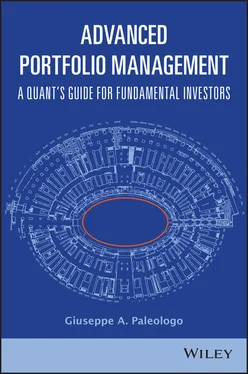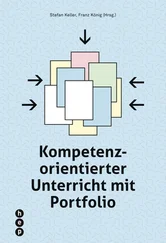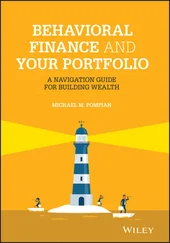60 57
61 58
62 59
63 60
64 61
65 62
66 63
67 64
68 65
69 66
70 67
71 68
72 69
73 70
74 71
75 72
76 73
77 74
78 75
79 76
80 77
81 78
82 79
83 80
84 81
85 82
86 83
87 84
88 85
89 86
90 87
91 88
92 89
93 90
94 91
95 92
96 93
97 94
98 95
99 96
100 97
101 98
102 99
103 100
104 101
105 102
106 103
107 104
108 105
109 106
110 107
111 108
112 109
113 110
114 111
115 112
116 113
117 114
118 115
119 116
120 117
121 118
122 119
123 120
124 121
125 122
126 123
127 124
128 125
129 126
130 127
131 128
132 129
133 130
134 131
135 132
136 133
137 134
138 135
139 136
140 137
141 138
142 139
143 140
144 141
145 142
146 143
147 144
148 145
149 146
150 147
151 148
152 149
153 150
154 151
155 152
156 153
157 154
158 155
159 156
160 157
161 158
162 159
163 160
164 161
165 162
166 163
167 164
168 165
169 166
170 167
171 168
172 169
173 170
174 171
175 172
176 173
177 174
178 175
179 176
180 177
181 178
182 179
183 180
184 181
185 182
186 183
187 184
188 185
189 186
190 187
191 188
192 189
193 190
194 191
195 192
196 193
197 194
198 195
199 197
200 198
201 199
Advanced Portfolio Management
A Quant’s Guide for Fundamental Investors
Giuseppe A. Paleologo

Copyright © 2021 by Giuseppe A. Paleologo. All rights reserved.
Published by John Wiley & Sons, Inc., Hoboken, New Jersey.
Published simultaneously in Canada.
No part of this publication may be reproduced, stored in a retrieval system, or transmitted in any form or by any means, electronic, mechanical, photocopying, recording, scanning, or otherwise, except as permitted under Section 107 or 108 of the 1976 United States Copyright Act, without either the prior written permission of the Publisher, or authorization through payment of the appropriate per-copy fee to the Copyright Clearance Center, Inc., 222 Rosewood Drive, Danvers, MA 01923, (978) 750-8400, fax (978) 646-8600, or on the web at www.copyright.com. Requests to the Publisher for permission should be addressed to the Permissions Department, John Wiley & Sons, Inc., 111 River Street, Hoboken, NJ 07030, (201) 748-6011, fax (201) 748-6008.
Limit of Liability/Disclaimer of Warranty: While the publisher and author have used their best efforts in preparing this book, they make no representations or warranties with respect to the accuracy or completeness of the contents of this book and specifically disclaim any implied warranties of merchantability or fitness for a particular purpose. No warranty may be created or extended by sales representatives or written sales materials. The advice and strategies contained herein may not be suitable for your situation. You should consult with a professional where appropriate. Neither the publisher nor author shall be liable for any loss of profit or any other commercial damages, including but not limited to special, incidental, consequential, or other damages.
For general information on our other products and services please contact our Customer Care Department in the U.S. at 877-762-2974, outside the U.S. at 317-572-3993 or fax 317-572-4002.
Wiley also publishes its books in a variety of electronic formats. Some content that appears in print, however, may not be available in electronic format.
Library of Congress Cataloging-in-Publication Data is Available:
ISBN 9781119789796 (Hardback)
ISBN 9781119789819 (epdf)
ISBN 9781119789802 (epub)
Cover Design: Wiley
Cover Image: © Giovani Battista Piranesi, Public Domain
To Tofu
Chapter 1 For Whom? Why? And How?
I wrote this book for equity fundamental analysts and portfolio managers, present and future. I am addressing the reader directly: I am talking to you , the investor who is deeply in the weeds of the industry and the companies you cover, investigating possible mispricings or unjustified divergences in valuation between two companies. You, the reader, are obsessed with your work and want to be better at it. If you are reading this, and think, that's me! , rest assured: yes, it's probably you. You were the undergraduate in Chemical Engineering from Toronto who went from a summer job at a liquor store to founding an $8B hedge fund. The deeply thoughtful Norwegian pension fund manager who kept extending our meeting asking questions. The successful energy portfolio manager who interviewed me for my first hedge fund job, and the new college graduate from a large state university in Pennsylvania taking a job as an associate in a financials team.
I imagine that these readers are at different stages in their careers. Since the companies they cover are fundamentally different, they do think in different ways. But they all share a feature: they all have valuable trading ideas but realize that having good ideas is useless without the knowledge of how to turn them into money. This is the objective of portfolio construction and risk management: how to put together a portfolio of holdings that will be profitable over time and will survive adversities. This book is a short, incomplete guide toward investment enlightenment.
There is a second group of readers who will benefit from this book: the quantitative researchers who are, more and more, essential members of fundamental teams. There is not a strict separation between PMs and quantitative researchers. The quantitive researchers will find the appendix useful, if they want to implement programmatically the advanced tools the book describes.
1.1 What You Will Find Here
The book introduces a few themes, and then revisits them by adding details. You will learn how to:
1 Separate stock-specific return drivers from the investment environment's return drivers;
2 Size your positions;
3 Understand your performance;
4 Measure and decompose risk;
5 Hedge the risk you don't want;
6 Use diversification to your advantage;
7 Manage losses;
8 Set your leverage.
The approach I follow is to offer recommendations and best practices that are motivated by theory and confirmed by empirical evidence and successful practice. While I rely heavily on the framework of factor modeling, I believe that even a reader who does not currently have access to a risk model can still get a lot out of it. Day-to-day, several portfolio managers run very successful books without checking their factor risk decomposition every minute. The reason is that they have converted insights into effective heuristics . Wherever I can, I will flesh out these rules of thumb, and explain how and when they work.
1.2 Asterisks; Or, How to Read This Book
The mathematical requirements are minimal. Having taken an introductory course in Statistics should give the tools necessary to follow the text. Different readers have different objectives. Some want to get the gist of a book. Time is precious, only the thesis matters, its defense doesn't. Gettysburg Address: This new nation was conceived in Liberty, and dedicated to the proposition that all men are created equal. Hamlet: revenge is a futile pursuit. Moby Dick: please , don't hunt whales. To the CliffsNotes -oriented reader, to the secret agent perusing a book between Martinis: there is hope. Just read the sections that are not marked by a “  ”. Then there is the detail-oriented reader.
”. Then there is the detail-oriented reader.
Читать дальше


 ”. Then there is the detail-oriented reader.
”. Then there is the detail-oriented reader.










